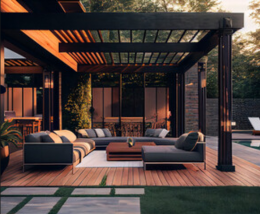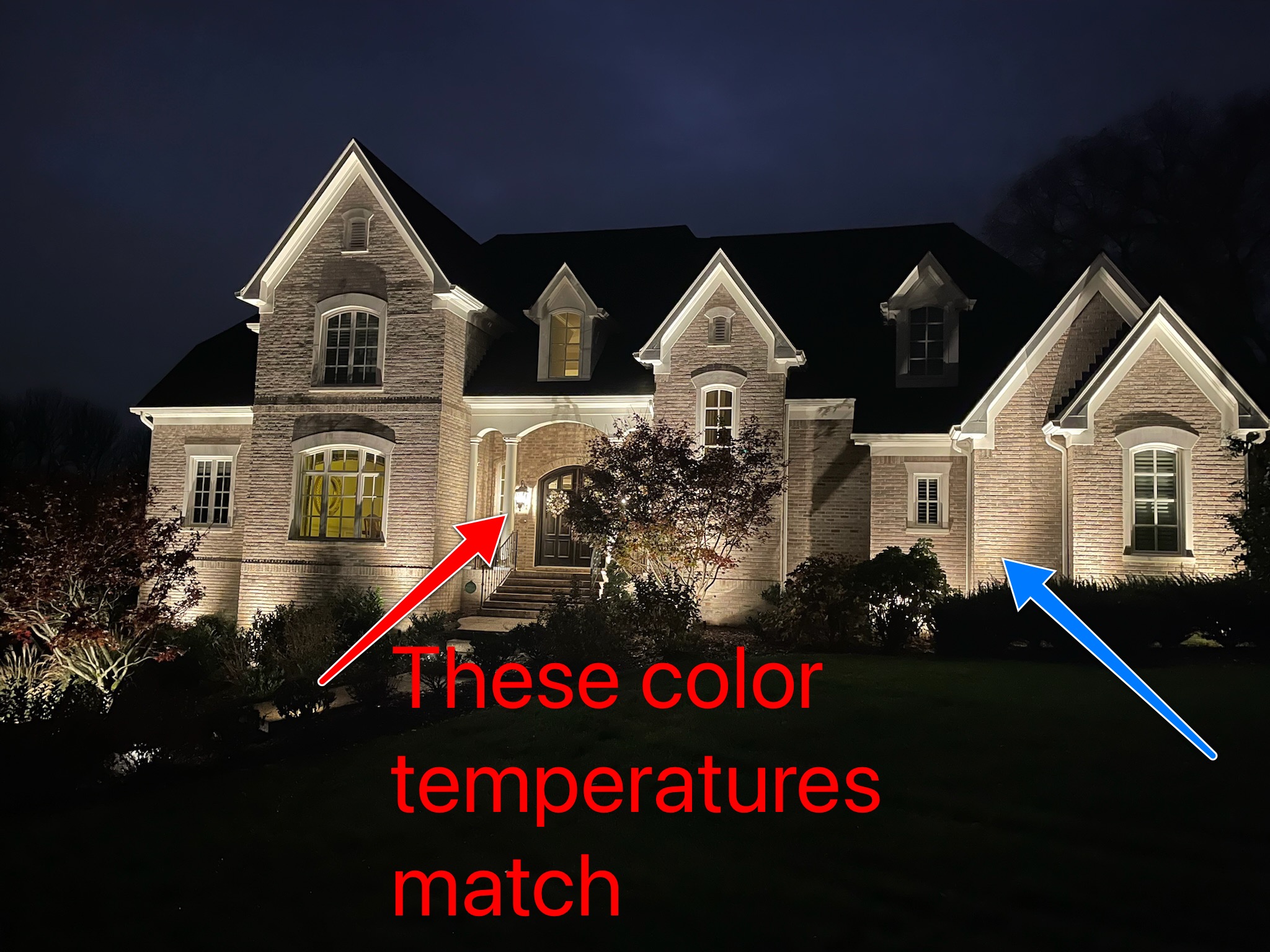How to match landscape lighting color temperature to your homes exterior lighting.
Incorporating landscape lighting into your outdoor lighting scheme requires careful consideration of color temperature to ensure a cohesive and aesthetically pleasing look. By matching the color temperature of your landscape lighting to your home’s exterior lighting, you can create a harmonious ambiance that enhances the overall appeal of your outdoor space. Paying attention to these details will result in a seamless integration of different lighting elements, elevating the visual impact of your property.
When it comes to curb appeal, every detail counts—especially your home’s exterior lighting. Whether you’re illuminating a pathway, accenting architectural features, or showcasing beautiful landscaping, the key to a cohesive look lies in one often-overlooked element: matching the color temperature of your landscape lighting with your exterior lanterns.
In this guide, we’ll explore how to seamlessly coordinate your outdoor lighting for a polished, professional, and welcoming appearance.
“Best LED landscape lighting for warm glow” is what we hear a lot for our customers! Here is some information on how to make sure that happens!
Why Color Temperature Matters in Outdoor Lighting
“How do I match outdoor lighting color temperature”… This is a common question from our customers. The main thing you want to focus on is the color temperature of the individual bulbs.
Color temperature is measured in Kelvin (K) and determines how warm or cool the light appears:
- 2700K–3000K: Warm white (similar to traditional incandescent light)
- 3500K–4100K: Neutral white
- 5000K–6500K: Cool white or daylight
Matching the Kelvin rating of your landscape lights to that of your exterior wall lanterns, porch lights, or post lights creates a unified glow across your entire property. A mismatch in color temperature—like warm amber landscape lights with cool white wall lanterns—can feel disjointed and visually disruptive.
“Do you have any curb appeal lighting tips?”… Landscape lighting in combination with exterior lighting for the home is crucial for curb appeal.
How to Match Landscape Lighting with Exterior Lanterns
1. Check the Existing Lanterns’ Color Temperature… This is going to be on the bulb that is in the lanterns currently.
Start by identifying the color temperature of the bulbs already installed in your exterior fixtures. If you’re unsure, check the bulb or fixture packaging, or swap in a smart bulb that allows color temperature adjustment for testing.
2. Choose Matching LED Landscape Bulbs
Most landscape lighting—such as path lights, uplights, and spotlights—now come with LED options that offer various color temperatures. Match these to your exterior lanterns as closely as possible.
For example:
- If your lanterns use a 2700K warm white bulb, opt for landscape lighting with the same warmth.
- For a more modern look, choose 3000K to 4000K for a clean but inviting feel.
3. Consistent Style, Consistent Mood
Matching color temperature isn’t just about appearance—it affects mood and safety too. A consistent warm glow creates a cozy, welcoming vibe, while cooler tones offer increased visibility and a more contemporary aesthetic. Align your choices with your home’s architecture and exterior design goals.
Common Mistakes to Avoid in Landscape Lighting
- Mixing Color Temperatures: Combining warm and cool lights can create a jarring, mismatched look.
- Ignoring Dimming Effects: Some dimmable LEDs shift in color temperature as they dim—test thoroughly before installation.
Overlooking CRI (Color Rendering Index): A high CRI (80+) helps colors look more natural under artificial light, which is especially important for landscaping.

